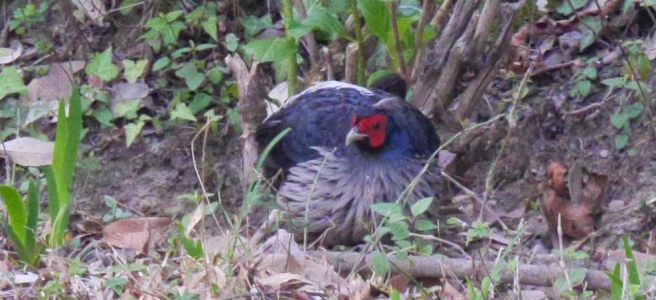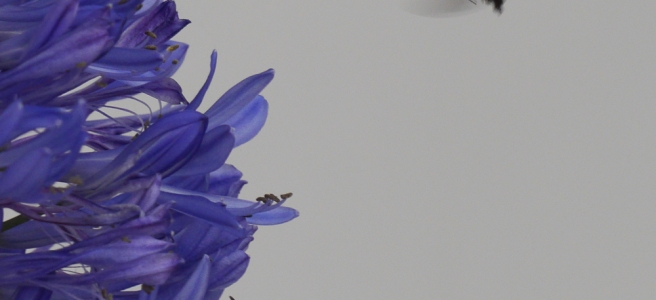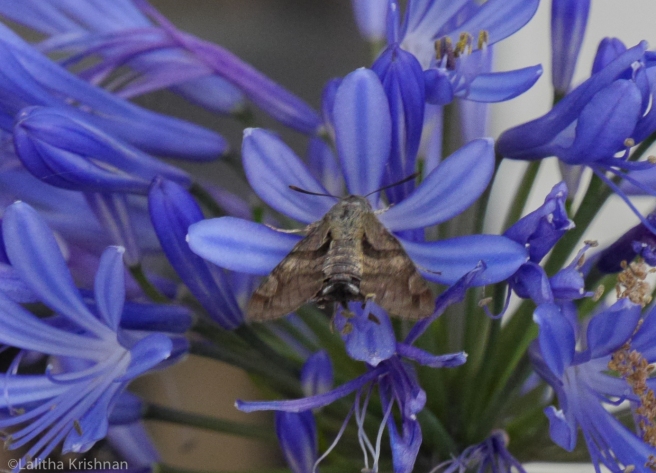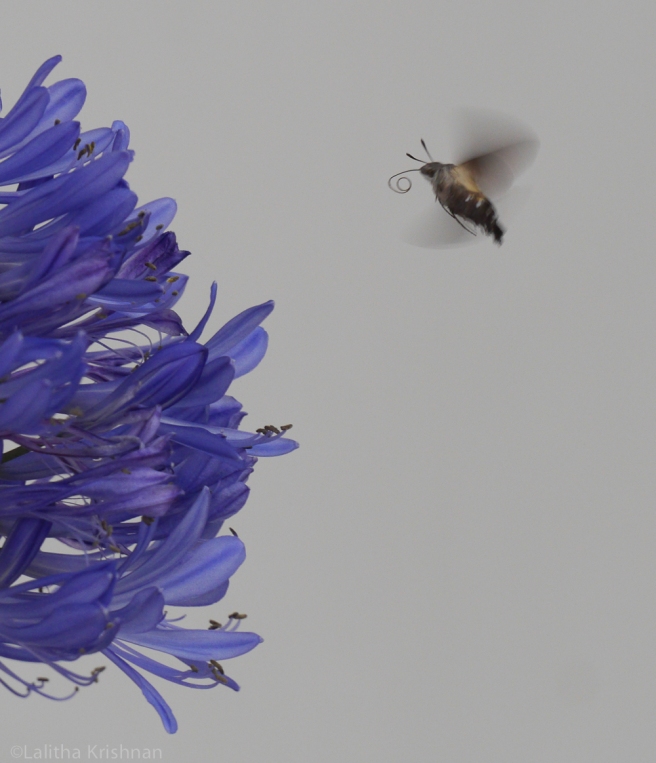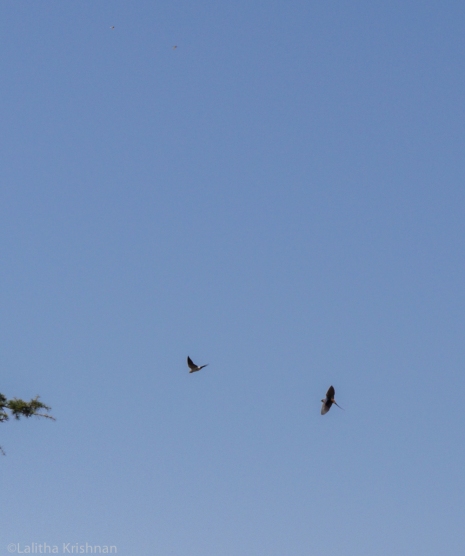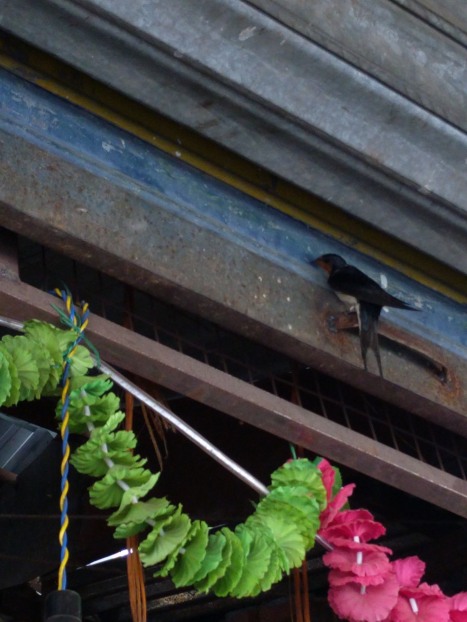I was lingering over my morning brew of South Indian coffee in Ranikhet [29.6434° N, 79.4322° E] when I spotted one of my favourite Himalayan pheasants pecking away below the dangling wisteria. The Khaleej is a common sight on the hillside, it is categorized with a conservation status of ‘LC’ [Least Concern] by the International Union for Conservation of Nature (IUCN). That means there’s a healthy population of Khaleej pheasants around and you’re very likely to spot them if you’re in the Himalayan foothills.
Common not ordinary
I find the Khaleej nothing less than dramatic. If you haven’t seen a Khaleej rooster up close, think of a dandy draped in iridescent blue-grey-black, donning a swanky brush-stroked neckpiece, delicate scalloped patterns on his coattail; hiding behind a bloodred masquerade mask. It’s quite the show stopper. The all brown hen with white-edged feather patterns doesn’t look so dull on her own. But put alongside her male counterpart and her chances are bleak. In the breeding season which is right about now, things get interesting.
![The Khaleej [pheasant female]](https://earthymatters.blog/wp-content/uploads/2018/04/untitled.jpg?w=526&h=304)

Coming back to my tale of two pheasants, our solo traveller cocked up his head; I too heard the clucking that got him into an instant splayed-crest mode. Then I heard an urgent onslaught of clucks and saw a rapid blur of pheasants clash behind the screen of yellow banksia. I missed all the action. The impact of the chest a/g chest or whatever that encounter was, made them recoil violently. They both kept at that raucous clucking but didn’t engage again. I noticed the hen leave the scene in a hurry. Romeo clucked himself downhill reluctantly. I spied on the pheasants for two more days to see if he would brave the competition again but he was a picture of foraging-innocence. The hen had chosen her rooster and stood her ground. The very red-wattled one who succeeded in thwarting her 2nd suitor was strutting around like a puff fish. How I just love watching wild performances over coffee.
You can watch it on my youtube channel:http://bit.ly/KhaleejFaceOff
Watch the split second faceoff:
